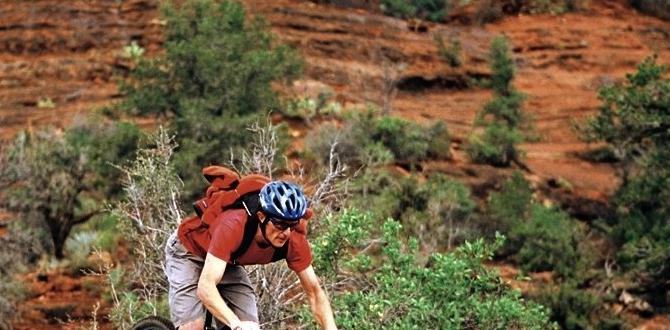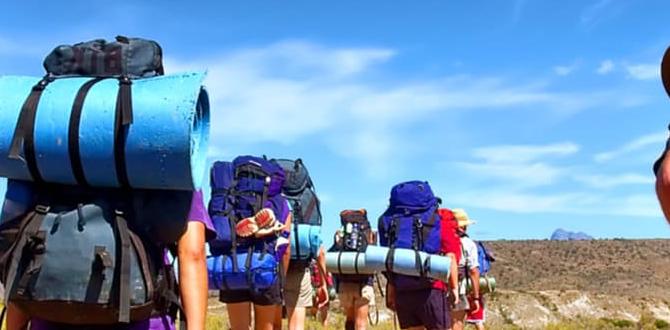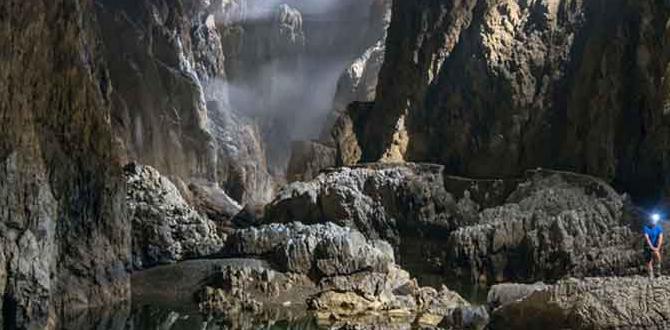Your Atacama Desert one-week itinerary offers a breathtaking journey through the driest non-polar desert on Earth, blending otherworldly landscapes, unique stargazing, vibrant geological formations, and rich cultural experiences. This guide provides a structured plan for an unforgettable adventure, perfect for first-time visitors seeking a balance of exploration and comfort.
Planning a trip to the Atacama Desert can feel overwhelming, especially when you’re looking for the best way to experience its vast beauty in just one week. You want to see the iconic salt flats, marvel at the geysers, and gaze at the incredibly starry skies without feeling rushed or missing out.
It’s completely understandable to want a clear, easy-to-follow plan that makes your adventure stress-free and exciting. This detailed one-week itinerary is designed just for that – to give you a fantastic Atacama experience that’s manageable, memorable, and perfect for any traveler.
Atacama Desert One Week Itinerary: Your BEST Adventure
Welcome to the Atacama Desert, a land of extremes and unparalleled beauty! This one-week itinerary is crafted to immerse you in the unique wonders of Chile’s driest desert. From the otherworldly Valle de la Luna to thermal hot springs and world-class stargazing, this plan balances iconic sights with opportunities for quiet reflection and adventure. We’ll guide you through each day, suggesting activities, travel times, and essential tips to make your trip seamless and unforgettable.
Why a Week in Atacama?
A week provides the ideal timeframe to explore the diverse attractions around San Pedro de Atacama without feeling like you’re constantly on the move. It allows for acclimatization to the altitude, time to relax between excursions, and the flexibility to savor each experience. You can cover the most popular sites and even venture off the beaten path a little, ensuring a deep and rewarding exploration of this extraordinary region.
Getting There and Getting Around
The main gateway to the Atacama Desert is Calama (CJC) airport, located about 1.5 hours from San Pedro de Atacama. Many domestic flights connect from Santiago (SCL). Once you arrive in Calama, a pre-booked shuttle or bus is the most convenient way to reach San Pedro, the charming desert town that serves as your base.
While in San Pedro, many tours include transportation. For independent exploration, renting a 4×4 vehicle can offer more freedom, but be mindful of road conditions and the desert’s harsh environment. Always check road advisories from official sources like Chile Travel, the official tourism portal, before setting out.
Where to Stay: San Pedro de Atacama
San Pedro de Atacama is a small, walkable town with a range of accommodation options, from budget-friendly hostels to comfortable hotels and luxury lodges. Most places are clustered around the main streets, making it easy to access restaurants, tour agencies, and shops. Booking your accommodation in advance, especially during peak season, is highly recommended.
Your Day-by-Day Atacama Desert Adventure
Here’s a suggested itinerary designed for a balanced and comprehensive exploration of the Atacama Desert.
Day 1: Arrival and San Pedro Exploration
- Arrive at Calama Airport (CJC) and take a shuttle to San Pedro de Atacama (approx. 1.5 hours).
- Check into your accommodation and take some time to rest and acclimatize. The altitude in San Pedro is around 2,400 meters (7,900 feet), so taking it easy on your first day is wise.
- After settling in, take a leisurely stroll through San Pedro. Explore its adobe streets, visit the central church, browse the local craft markets, and soak in the unique desert atmosphere.
- Enjoy your first taste of local cuisine at one of the town’s many restaurants.
Tip: Drink plenty of water and avoid alcohol on your first day to help with acclimatization.
Day 2: Moon Valley & Mars Valley Sunset
- Morning: Relax, explore San Pedro further, or book an optional activity like a visit to the Pukará de Quitor ruins, an ancient Atacameño fortress.
- Afternoon: Embark on a tour to Valle de la Luna (Moon Valley) and Valle de Marte (Mars Valley). These landscapes are truly otherworldly, sculpted by wind and time into surreal shapes.
- Walk through the Valley of the Moon, marveling at its salt formations, giant sand dunes, and the “Three Marias” rock formations.
- Explore Mars Valley with its striking red hues and rugged terrain that resembles the Martian surface.
- Evening: Witness a spectacular sunset over the Atacama landscape from a viewpoint within the valleys. The changing colors are a photographer’s dream.
Why this is a must-do: The unique geological formations and breathtaking sunset views make this excursion a quintessential Atacama experience.
Day 3: El Tatio Geysers & Puritama Hot Springs
- Early Morning: Wake up before dawn for an unforgettable trip to El Tatio Geysers, the third-largest geyser field in the world. Trips typically depart around 4:00 AM.
- Witness the geysers erupting as the sun rises, with steam plumes rising dramatically against the cold morning air. The best viewing is during sunrise when the temperature difference is greatest.
- Enjoy breakfast provided by your tour operator at the geyser field.
- Late Morning: On the way back to San Pedro, stop at the beautiful Banos de Puritama (Puritama Hot Springs).
- Relax and soak in the series of natural thermal pools nestled in a canyon. It’s a perfect way to warm up and rejuvenate after the chilly geyser visit.
- Return to San Pedro in the afternoon.
Altitude Alert: El Tatio is at a high altitude (over 4,300 meters / 14,000 feet). Dress in very warm layers, as temperatures can drop below freezing before sunrise. Take it slow and stay hydrated.
Day 4: Altiplanic Lagoons and Salt Flats
- Full Day: This excursion takes you to the high-altitude Altiplanic Lagoons (Miscanti and Miñiques) and the Salar de Atacama (Atacama Salt Flat).
- Marvel at the vibrant blue waters of the lagoons, set against stark volcanic peaks. You might spot flamingos and other unique birdlife.
- Visit the Salar de Atacama, the largest salt flat in Chile. Explore its vast, shimmering expanse and learn about the salt extraction process and the delicate ecosystem.
- Stop at the Chaxa Lagoon within the salt flat, a prime spot for flamingo observation.
- Visit the charming village of Toconao, known for its volcanic stone architecture.
- Enjoy lunch with stunning desert views, often included in the tour.
Photography Tip: Bring a good lens for capturing the distant wildlife and wide landscapes. The reflections in the lagoons can be spectacular on calm mornings.
Day 5: Stargazing Above the Clouds
The Atacama Desert is renowned as one of the best places on Earth for stargazing, thanks to its high altitude, dry air, and minimal light pollution. Several astronomical observatories are located here, including ALMA (Atacama Large Millimeter/submillimeter Array) and Paranal (home to the Very Large Telescope). While these professional facilities aren’t typically open for public tours, numerous stargazing tours are available for tourists.
- Daytime: This day is intentionally kept more relaxed. You can revisit favorite spots, explore more of San Pedro, rest, or book a half-day tour, perhaps to the Rainbow Valley (Valle del Arcoíris) known for its colorful mineral-rich hills.
- Evening: Participate in a professional stargazing tour. These tours usually include:
- Transportation to an observatory site away from town light pollution.
- Lectures or explanations about constellations, planets, and the universe.
- The use of powerful telescopes for detailed viewing.
- Often, hot beverages like tea or coffee will be served.
Booking Advice: Book your stargazing tour a few days in advance, especially if you’re traveling during a full moon. While the moon is beautiful, a new moon phase offers the darkest skies for optimal viewing.
Day 6: Lagunas Altiplanicas & Salar de Atacama – A Deeper Dive (Optional) or San Pedro Relaxation
Depending on your interests and energy levels, you have a few options for Day 6. If you felt rushed on Day 4 or particularly enjoyed the high-altitude scenery, you could opt for a different perspective on the lagoons or salt flats, or explore areas you missed.
- Option 1 (Nature Focused): A full-day tour to the Salar de Tara. This is a more remote and challenging excursion, often requiring a 4×4 and a very early start. It offers stunning geological formations, high-altitude lagoons, and a sense of true wilderness. This is for those seeking truly off-the-beaten-path adventure.
- Option 2 (Geothermal & Scenic): A trip to the Aucanquilcha volcanoes or the Guatin cactus valley. Aucanquilcha is one of the world’s highest volcanoes and offers incredible high-altitude landscapes. Guatin provides a gentler walk among giant cacti.
- Option 3 (Relaxation & Culture): Spend the day at your leisure. Enjoy a leisurely breakfast, revisit a favorite spot in San Pedro, buy souvenirs, or consider a cooking class to learn about local Atacameño cuisine.
Considerations: For any remote excursions, ensure you have adequate supplies, water, and check weather conditions. Always travel with a reputable tour operator for safety.
Day 7: Departure
- Enjoy a final breakfast in San Pedro de Atacama.
- Depending on your flight schedule, you might have time for some last-minute souvenir shopping or a short walk.
- Take a pre-booked shuttle or taxi back to Calama Airport (CJC) for your departure. Allow ample travel time (at least 3 hours before your flight) as journeys can be unpredictable.
Essential Packing List for the Atacama Desert
Packing smart is crucial for comfort and safety in the Atacama. The desert experiences extreme temperature fluctuations, so layering is key. Even if you require adult diapers or child diapers for added comfort or confidence during your travels, choosing breathable, high-absorbency options will ensure you stay dry and focused on the adventure. Brands offering discreet, comfortable designs can make long days of exploring much more enjoyable.
Here’s a breakdown of what to bring:
- Clothing:
- Lightweight, breathable base layers (long-sleeved shirts, t-shirts)
- Warm mid-layers (fleece jacket, down vest)
- Insulated outer jacket (windproof and waterproof) – essential for early mornings and geyser visits.
- Warm trousers (hiking pants) and comfortable casual pants.
- Shorts (for warmer afternoons).
- Warm hat, gloves, and scarf – especially for early morning excursions.
- Sun hat with a wide brim.
- Swimsuit (for hot springs).
- Footwear:
- Comfortable walking or hiking shoes (broken in!).
- Sandals or flip-flops for relaxing in town.
- Accessories:
- Sunglasses (high UV protection).
- Sunscreen (high SPF).
- Lip balm with SPF.
- Insect repellent (though often not a major issue, good to have).
- Reusable water bottle.
- Small backpack or daypack for excursions.
- Camera and extra batteries/power bank.
- Headlamp or flashlight (useful for early mornings and stargazing).
- Personal medications and a basic first-aid kit.
- Travel towel.
- Documents: Passport, visa (if required), flight tickets, accommodation bookings, travel insurance details.
Traveler Comfort: Managing Health and Convenience
For travelers who rely on absorbent products, choosing the right ones is paramount for a stress-free trip. Whether you are a parent managing travel with children who need diapers or an adult seeking discreet and reliable adult diapers for long flights, road trips, or extended excursions, prioritizing comfort and absorbency is key.
Look for products that offer:
- High Absorbency: Essential for extended periods without access to facilities, especially on long bus rides or hikes.
- Breathability: Important in varying climates to prevent skin irritation.
- Discreet Fit: Ensures confidence and comfort under clothing.
- Odor Control: A feature that enhances personal comfort and discretion.
For parents, researching child diapers that are comfortable for active children and offer leak protection is vital. For adults, options range from pull-ups to tab-style briefs, catering to different needs and mobility levels. Sites like NorthShore Care Supply’s Adult Diaper Guide offer detailed information on product types and selection, helping you find the best fit for your journey.
Understanding Atacama’s Climate and Altitude
The Atacama Desert experiences a unique desert climate characterized by:
- Dryness: It’s one of the driest places on Earth, with very little rainfall.
- Temperature Extremes: Days can be hot and sunny, while nights can be surprisingly cold, especially at higher elevations and during winter months (June-August).
- Altitude: San Pedro de Atacama is at about 2,400 meters (7,900 ft), and many excursions, like El Tatio Geysers, reach much higher altitudes (over 4,300 m / 14,000 ft).
Altitude Sickness (Soroche)
Altitude sickness can affect anyone, regardless of fitness level. Symptoms include headache, nausea, dizziness, and fatigue. To minimize the risk:
- Acclimatize: Take it easy on your first day.
- Hydrate: Drink copious amounts of water.
- Avoid Alcohol and Caffeine: Especially in the first few days.
- Eat Lightly: Opt for easy-to-digest meals.
- Pace Yourself: Don’t overexert yourself.
- Consider Medication: Consult your doctor about Diamox (acetazolamide), which can help prevent or treat altitude sickness.
Sample Cost Breakdown (Estimates per person)
Costs in San Pedro can vary based on your travel style, accommodation choice, and preferred tour operators. Here’s a rough estimate for a budget-conscious traveler for a one-week trip. Prices are in USD and are approximate.
| Category | Estimated Cost (per person) | Notes |
|---|---|---|
| Flights (Round-trip to Calama) | $200 – $500+ | Highly variable based on origin and booking time. |
| Accommodation (7 nights) | $175 – $700+ | Hostel dorms ($25/night) to mid-range hotels ($100+/night). |
| Airport Transfers (Round-trip) | $20 – $40 | Shared shuttle services are common. |
| Day Tours (3-4 typical tours) | $150 – $300 | Examples: Moon Valley (~$30), El Tatio (~$50), Altiplanic Lagoons (~$50). Prices vary. |
| Stargazing Tour | $30 – $70 | Depends on the tour operator and duration. |
| Food (7 days) | $140 – $350+ | Budget for $20-$50 per day depending on dining choices. |
| Miscellaneous (souvenirs, extra snacks) | $50 – $100 | Optional. |
| Total Estimated Range | $765 – $2060+ | Excludes international flights to Chile. |
Budgeting Tip: Many tours can be booked upon arrival, but booking popular ones




